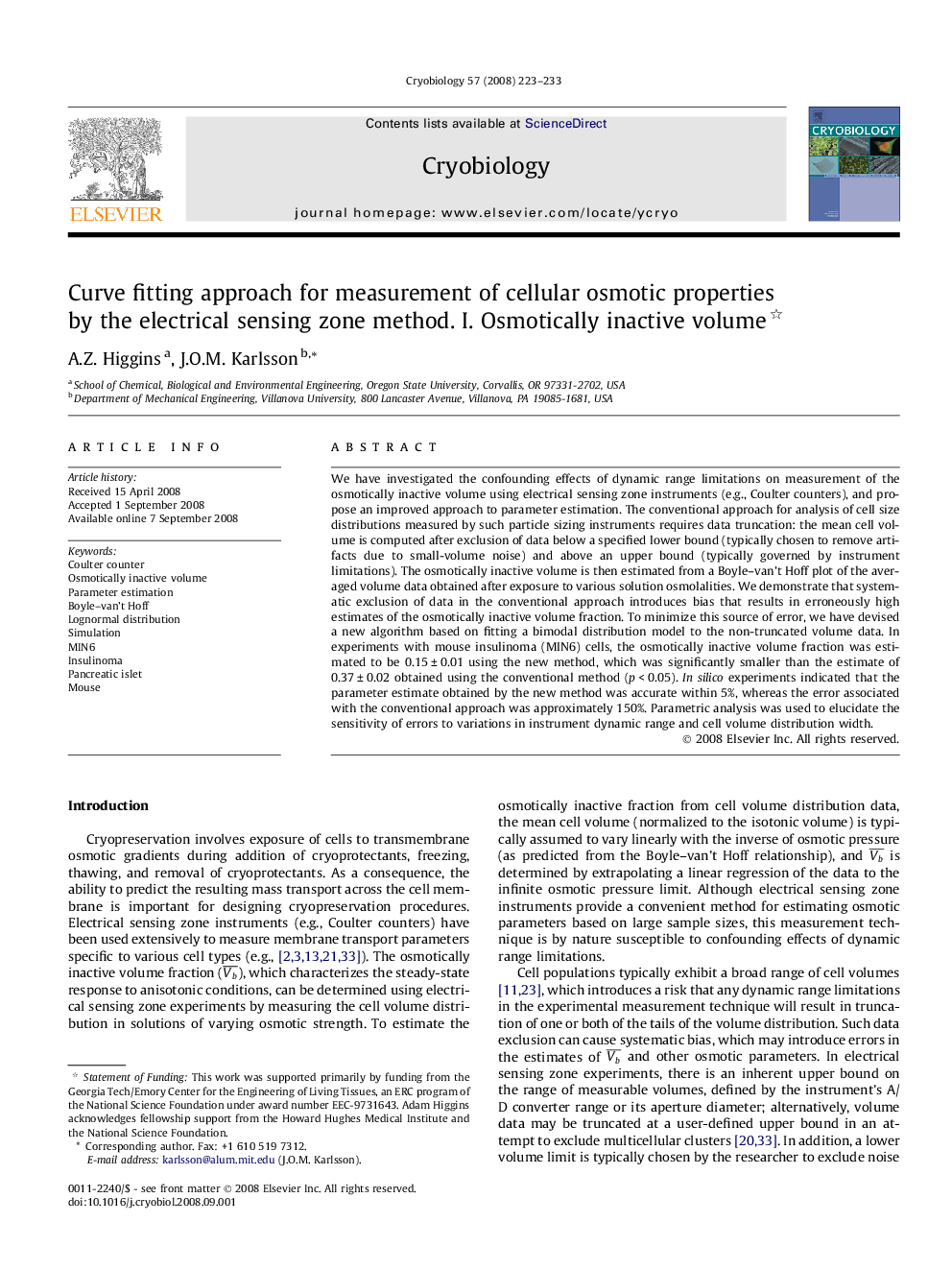| Article ID | Journal | Published Year | Pages | File Type |
|---|---|---|---|---|
| 2168894 | Cryobiology | 2008 | 11 Pages |
We have investigated the confounding effects of dynamic range limitations on measurement of the osmotically inactive volume using electrical sensing zone instruments (e.g., Coulter counters), and propose an improved approach to parameter estimation. The conventional approach for analysis of cell size distributions measured by such particle sizing instruments requires data truncation: the mean cell volume is computed after exclusion of data below a specified lower bound (typically chosen to remove artifacts due to small-volume noise) and above an upper bound (typically governed by instrument limitations). The osmotically inactive volume is then estimated from a Boyle–van’t Hoff plot of the averaged volume data obtained after exposure to various solution osmolalities. We demonstrate that systematic exclusion of data in the conventional approach introduces bias that results in erroneously high estimates of the osmotically inactive volume fraction. To minimize this source of error, we have devised a new algorithm based on fitting a bimodal distribution model to the non-truncated volume data. In experiments with mouse insulinoma (MIN6) cells, the osmotically inactive volume fraction was estimated to be 0.15 ± 0.01 using the new method, which was significantly smaller than the estimate of 0.37 ± 0.02 obtained using the conventional method (p < 0.05). In silico experiments indicated that the parameter estimate obtained by the new method was accurate within 5%, whereas the error associated with the conventional approach was approximately 150%. Parametric analysis was used to elucidate the sensitivity of errors to variations in instrument dynamic range and cell volume distribution width.
